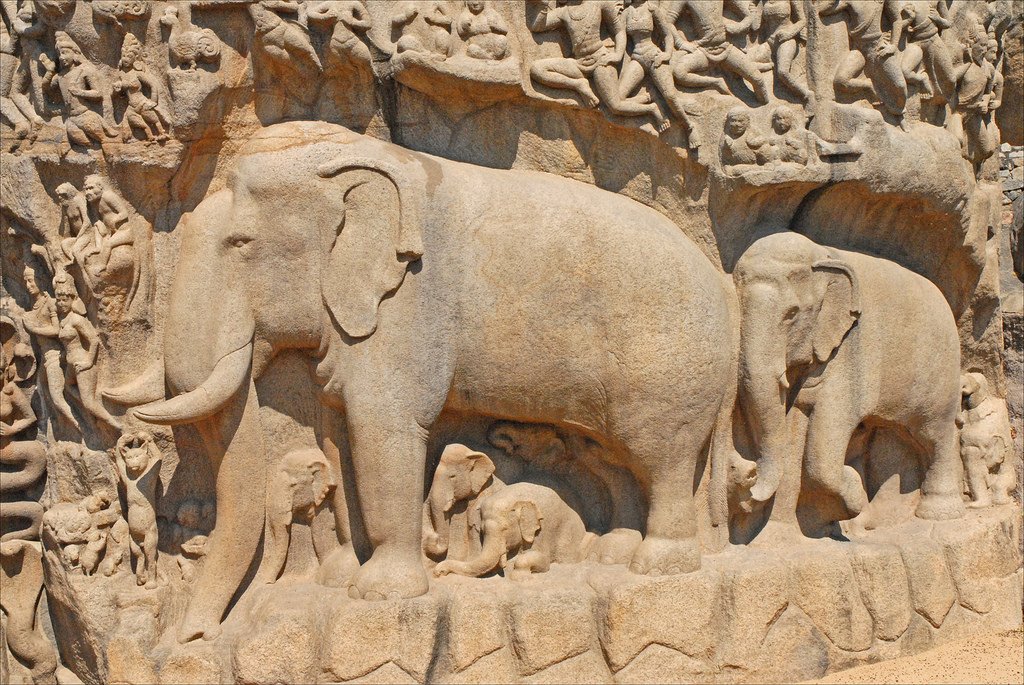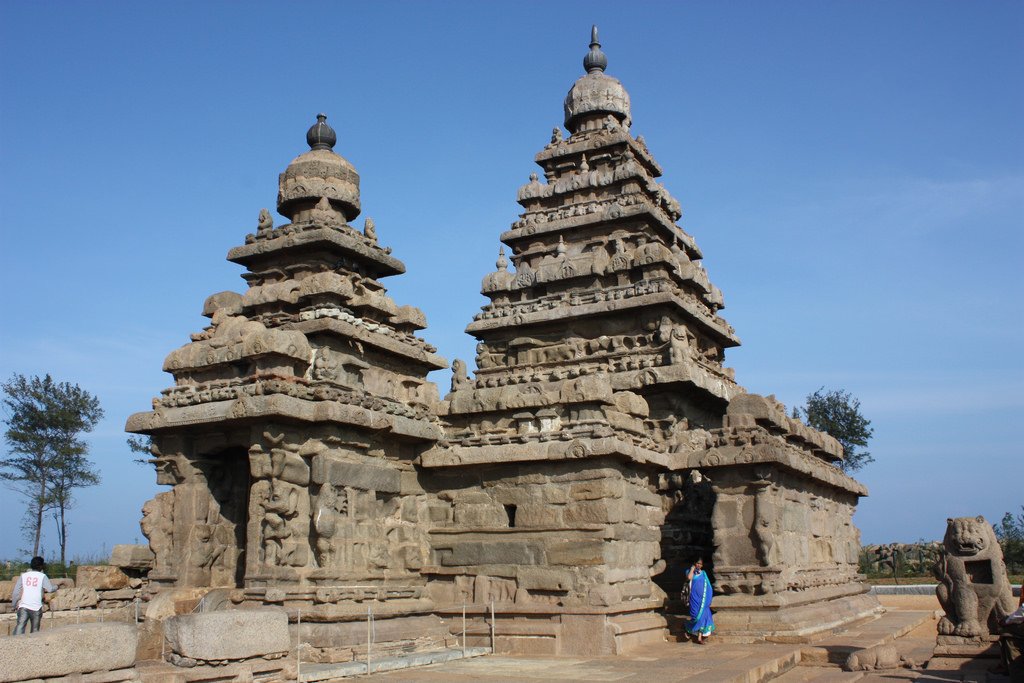We shall study about each of the states that comprised early South Indian history, including Chalukya, Pallava, and the Kadambas.
Kadambas
Inscriptions like the Halmidi and Talgunde inscriptions were left behind by them while they ruled over the Karnataka region. Banavasi (Vaijiyanti), which is located in Karnataka’s Uttar Kannada district, served as their main hub. Mayur Sharman, a Brahmin, was the founder and performed the Ashvamedha sacrifice.
After Mayur Sharman, Kakusthvarman became a prominent king. In addition to actively promoting trade, he showed a positive attitude toward Shaivism, Vaishnavism, and Jainism. Weaker kings came to power after his rule, but the Chalukyas eventually overthrew them. The Chalukyas established their supremacy in the area over time.
Contribution of Kadambas
Karnataka benefited greatly from the Kadambas’ contributions to its development, especially their role in the establishment of empires. They took a tolerant stance and even adopted Jainism, all the while actively promoting Brahmanism. The Kadambas played a significant role in promoting trade and produced a variety of coins with distinctive denominations, such as the Padma tanka, made of copper and gold.
The Kadambas brought stability to the area for two centuries. They were instrumental in the early development of temples and in advancing Shaivism and Vaishnavism. Even though we still don’t fully understand the Kadambas, their varied contributions to Karnataka’s cultural and religious landscape continue to leave a lasting legacy.
Pallavas
The origin of the Pallavas, whose name means “Creeper,” is still up for debate. They were probably local pastoral tribes. With Kanchipuram serving as their capital, they consolidated their power in the Tondai Mandala region, which is the territory between the Pennar and Vellar rivers.
The founder, SimhaVishnu, was known as the “Lion of Earth” in South India. Early on, Mahendra Varman, a ruler of their time, fought the Chalukyas and was likely to lose. Mahendra Varman had a complex personality despite his difficulties. He was a well-known poet, musician, and at first a devotee of Jainism before converting to Shaivism.
After vanquishing the Chalukyas, the formidable ruler Narsimhavarman attained the title of Vatapikonda. Despite being best known for his military prowess, he also made contributions to the arts and architecture, most notably with the building of the Rathas of Mamallapuram.
Parmeshwar Varman and Narsimhavarman II were among the rulers who attempted to grow the Pallava kingdom. In an attempt to increase their sphere of influence, they built temples in the Dravidian style. The last two Pallava kings known to history were Nandi Varman and Aparajit, who lost to the Imperial Cholas in the ninth century AD. The Pallava dynasty came to an end with this, opening the door for the Chola dynasty to ascend.
Administrative contribution of Pallavas
Despite the fact that our understanding of the Pallavas is restricted, it is clear that they were essential in preserving political stability for more than thirty years. With the assistance of capable ministers, the king functioned as the head of state and was regarded as the embodiment of justice, sitting in judgment. The king led a well-trained army, and the public held him in high regard.
Ensuring the provision of irrigation facilities and promoting agriculture were among the duties assigned to the king. During the Mahendra Varman era, rulers were acknowledged for their notable efforts in building irrigation tanks, supporting documentation of these projects.
Documentation regarding the tax system has also been made, emphasizing the importance of land tax as the main revenue source.
There were many land grants, and some areas, like Devadana, Agrahara, and Brahmadeya, were exempt from taxes. Temple-allocated land was referred to as Devadana specifically.
The state was divided into Kottam provinces during the Pallava era, each of which was governed by kingly appointees. This organizational framework facilitated efficient governance.
Village assemblies managed irrigation systems and kept track of village lands, contributing to local autonomy. These assemblies also oversaw the operation of nearby temples, demonstrating a decentralized form of government at the period.
Society
During this period, Tamil society saw significant changes. The caste system became entrenched, and Brahmins rose to prominence. Land grants were given to them by merchants and rulers. Shaivism became more and more common, and the Tamil Bhakti tradition started to have a big impact on society.
Religious Trend
There were two major changes: the rise of Vaishnavism and the ascent of Shiva worship. The holy saints Alvar and Nayanars laid the groundwork for the Bhakti tradition. Jainism and Buddhism both declined at the same time. Notably, the Pallava era is acknowledged for its contributions to literature and education.
Education and literature
The Pallavas were well-known for their support of education, and Kanchi became a famous hub of learning under their rule. During this time, the Ghatika system underwent substantial development. Kanchi was the school of choice for the founder of the Kadamba dynasty, who became renowned for his Buddhist scholarship. Prominent figures of this era included Bharavi and Dandin, the Sanskrit writer famous for the Dasakumaracharita. Another notable work by Pallava monarch King Mahendra Varman is the drama “Mattavilasprahasana.”
The literary works in Tamil flourished during this period, with many texts written by the saints Alwar and Nayanar. Specifically, the Alvar saints created the “Nalayara Divyaprabandham.” It’s interesting to note that the Tamil language contains expressions from the Mahabharata.The era is distinguished by its important literary and educational contributions.
Music and Dance
There was a noticeable advancement in the fields of dance and music during this time. While the Kudumiyamali inscription explores musical notes and instruments, the Mandur inscription offers insights into regional music. Both music and dance developed at the same time.
During this period, sculptures exhibited diverse dancing poses, and the saints of Nayanar and Alwar added bhakti songs to the repertoire. This era is notable for its substantial contributions to dance and music.
Painting
This period is well known for paintings and is notable for its creative accomplishments. Mahendra Varman wrote a book titled “Chitrakarapuli” during this time, and the Sittanavasal paintings—notable cave paintings—also serve as further examples of this period’s artistic diversity.
Architecture

Pallava architecture can be broadly divided into four stages:
- Mahendra Varman School: Known for its architecture of rock-cut mandapas, this period is linked to the construction of mandapas.
- Narasimha Varman School: This period is known for its elaborate and distinctive designs and Ratha architecture, especially that of the Pandavas.
- Rajsimha School: Known for its structural temples, this architectural movement was crucial to the development of Dravidian architecture.
- Nandi Varman School: This architectural movement gave Pallava projects a hint of elegance by creating tiny, elaborate temples.
The Pancha Pandav Ratha, in particular, is one of the most notable creations of Narsimh Varman’s architectural legacy. The Dharmaraja Ratha was the largest of these, and Draupadi Ratha was the smallest. Known as Mahabalipuram Rathas, these Rathas were built in the style of Buddhist viharas and chaityas.
The Rajsimha school was acknowledged for its structural temples, the most well-known of which are the Shore Temple and Kailashnath Temple. This was the first instance of Dravidian architecture.
Shore Temple
The Shore Temple is devoted to Lord Shiva and features exquisite carvings and distinctive architecture. It is made up of three main shrines, one for Lord Shiva and the other two for Lord Vishnu, and it overlooks the Bay of Bengal. The temple, which features Dravidian-style architecture and granite construction, is home to exquisite sculptures of Hindu deities and mythological scenes, one of which is a famous sculpture of Vishnu in a reclining position named “Sthala Shayana Perumal.”
Kailashnath temple
Dedicated to Lord Shiva, the Kailashnath Temple is located in Ellora, Maharashtra, and is a prime example of traditional Indian architecture. Built during the reign of Krishna I, the Rashtrakuta king, in the eighth century, it is among the largest monolithic constructions in the world. It is a single-stone sculpture that resembles Mount Kailash, the fabled home of Lord Shiva. Richly decorated with elaborate carvings that depict scenes from mythology and celestial creatures, the temple is a UNESCO World Heritage Site that draws worshippers from all over the world. It serves as evidence of the artistic and architectural prowess of ancient India.
The appearance of smaller, more elaborately decorated temples marked the advent of the Nandi Varman school of architecture. The Vaikuntha Perumal temple stands as a notable example of this architectural movement, which focused on building small but elaborately decorated temples.
Development of Sculpture
During their time, the Pallavas created some of the most famous sculptures in history, earning them recognition for their important contributions. The Penance of Arjuna and the Descent of Ganga are two of the most notable of these. Large-scale sculptures of Nandi and elephants are among the other works that highlight the Pallava period’s artistic achievements.
Chalukyas of Badami
- Pulkeshin I founded the Chalukya dynasty, and Pulkeshin II is regarded as its most notable emperor.
- Pulkeshin II fought against northern foes like Harsha and fought against a number of South Indian kings, including the Gangas, Kadambas, and Alupas.
- The inscription at Aihole sheds light on his noteworthy accomplishments, which include his decisive victory over Harsha of Kannauj.
- Vikramaditya ascended to the throne after Pulkeshin II and took on the title KanchiKonda.
- Kirtivarman II was the last great king of the Chalukya dynasty; the Rastrakutas defeated him, ending his rule.
Contribution of Chalukya
Even more than the Pallavas, the Chalukyas were renowned for having a strong, centralized government that gave little autonomy to the villages. They possessed an impressive navy and a potent military, with Pulakesin II commanding 100 ships.
The Chalukyas were renowned for their promotion of Brahmanical religion and for their open-mindedness. Vedic ceremonies were highly valued by them, and Pulkeshin I even carried out unique Ashvamedha sacrifices. The dynasty actively promoted the construction of numerous temples, which aided in the dissemination of Vedic rites.
In addition to endorsing Brahmanism, the Chalukyas promoted Buddhism and Jainism. Huen Sang records suggested that Buddhism had declined during their reign.
The Aihole Inscription was written by Pulkeshin II’s court poet, Ravi Kirti, who also saw an increase in support for Jainism.
Importantly, the Chalukyas played a significant role in developing languages like
Sanskrit and Kannada. They also contributed to architecture by building structural
temples.
Structural Temples
The Chalukyas created structural temples known as Vesara style, which blended elements of Dravidian and Nagara architecture. The three locations with the greatest notoriety are Pattadakal, Badami, and AIhole.
There are more than seventy temples in Aihole, such as the Durga, Meguti, and Lord Khan temples. There are ten temples in Pattadakal, including the Virupaksha and Papanatha temples. There are temples in Badami, such as the Mukti and Melegutti temples.
In addition to their paintings, the Chalukyas were well-known for their temples. In particular, the paintings in the Badami Cave are renowned for their portrayal of primarily Brahmanical themes.
Pre & Mains : Buy History NCERT 11th class by R.S.Sharma for UPSC
History Optional : Buy A History of Ancient And Early Medieval India : From the Stone Age to the 12th Century By Upinder Singh
Featured image credit :- World History license
